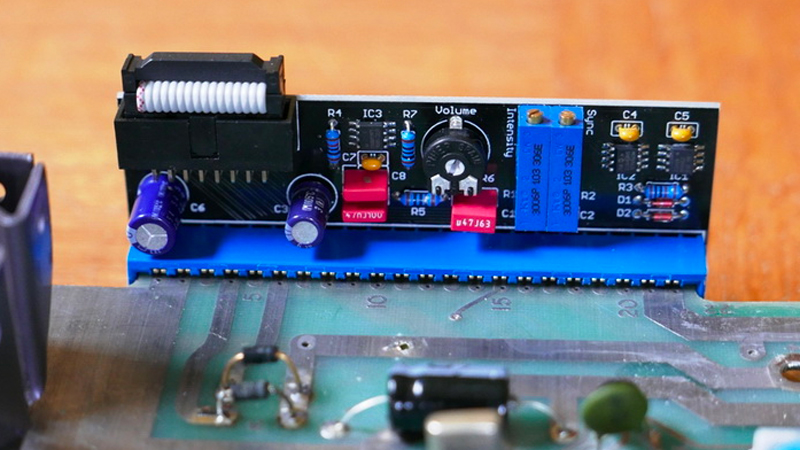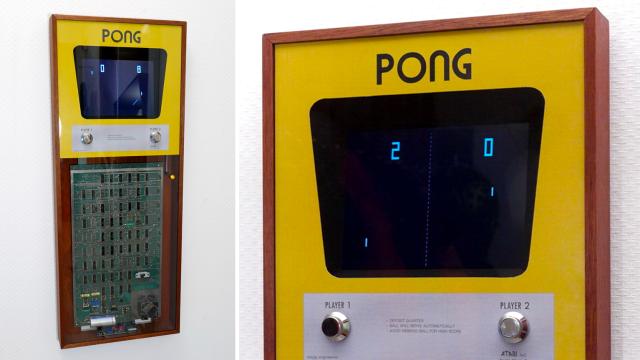If you grew up hanging out in arcades, now that they’re gone, there’s probably a small part of you who wants to recreate that experience at home. But sacrificing a big chunk of your living space to classic arcade cabinets no longer seems necessary as Jürgen Müller demonstrates, turning a classic Pong cabinet into a framed work of art on the wall that’s still playable.
Yes, nearly any device with a screen on it has more than enough processing power to play Pong now, but there’s something beautiful about the old-school engineering and electronics that were needed to make the earliest video games actually work. Crack open an original Pong cabinet and you won’t find a microprocessor or memory holding the game’s programming: as Müller reveals, “the whole game logic and signal generation are hard-wired from sixty-some TTL chips.”
It was a brute force way to create a video game, but also the most cost-effective way to create an arcade cabinet designed to make money. It’s doubtful Pong would have been a hit if mum-and-pop pizzerias had to shell out half a million dollars to put one in the corner of their restaurants. After getting their hands on an original 1972 Pong circuit board with the intent of building a cabinet around it, Müller also discovered that its electronics were kind of lovely, and deserved to be on display.

Instead of perfectly recreating the cabinet of a 1972 Pong arcade cabinet, Müller created a two-inch-thick frame that contained the original mainboard (protected behind a sheet of clear plexiglass) as well as a recreation of its screen and controls. No one wants to undertake the extreme engineering challenge of mounting an era-authentic heavy CRT screen to a wall, so Müller replaced it with a flat, eight-inch TFT panel. But to recreate the effect of an old-school CRT screen, a homebrew FPGA-based upscaler acts as an interface between the original Pong circuit board and the TFT display, adding simulated “scan lines, horizontal blur, and some phosphor afterglow” so gameplay looks far more authentic.
You can check out more details of Müller’s “Pong in a picture frame” on their website, which includes more photos of it disassembled to reveal the modern components inside that are needed to make it work that would otherwise be hidden away when it’s fully assembled.
